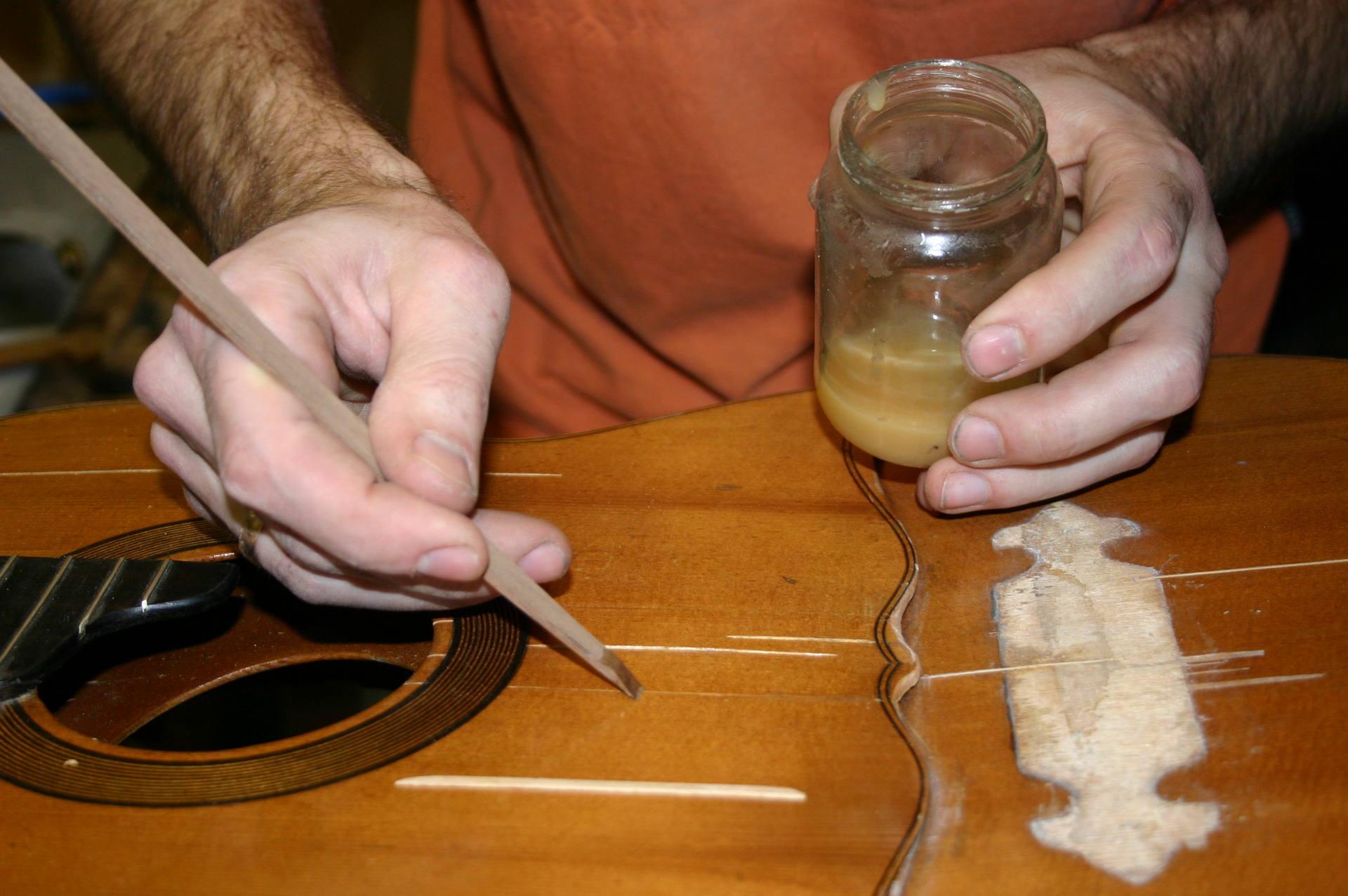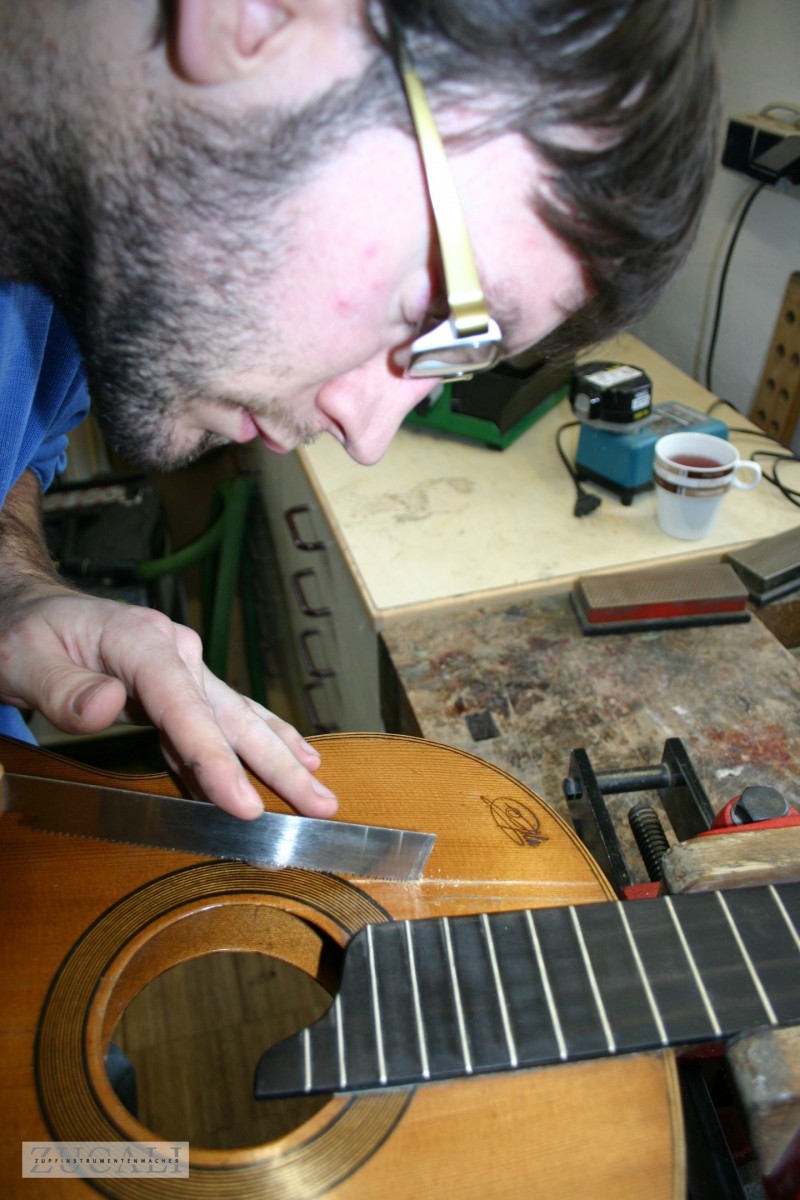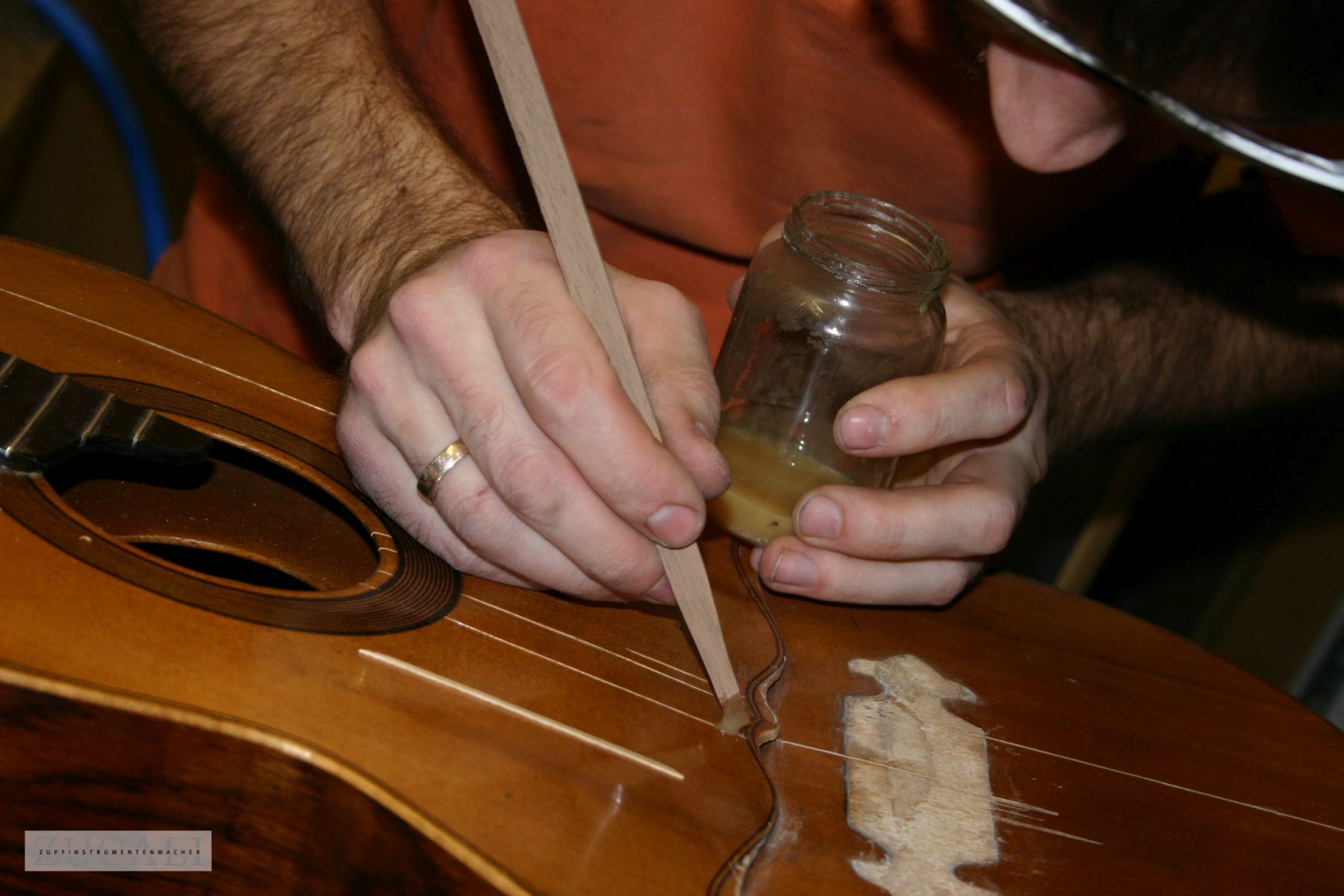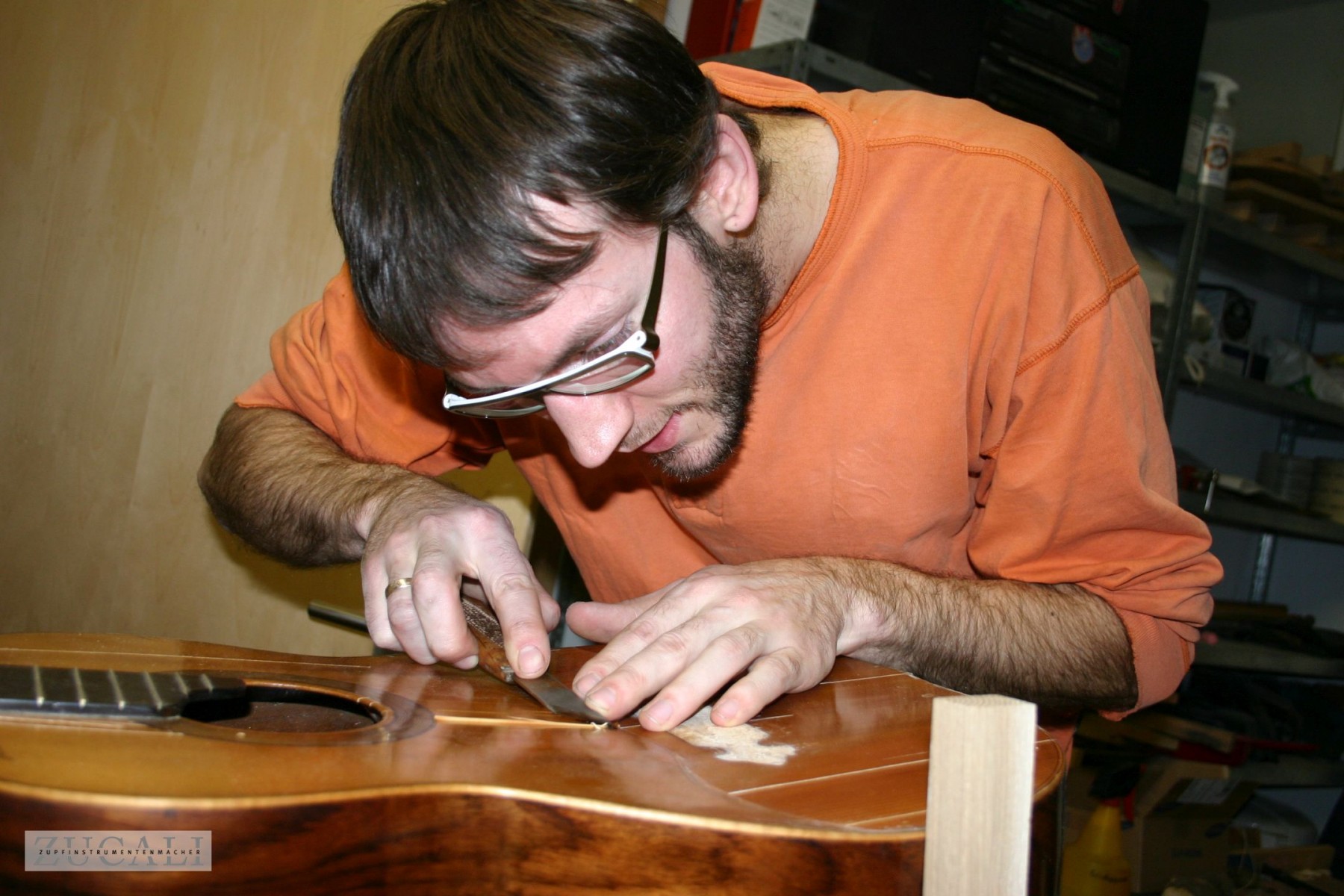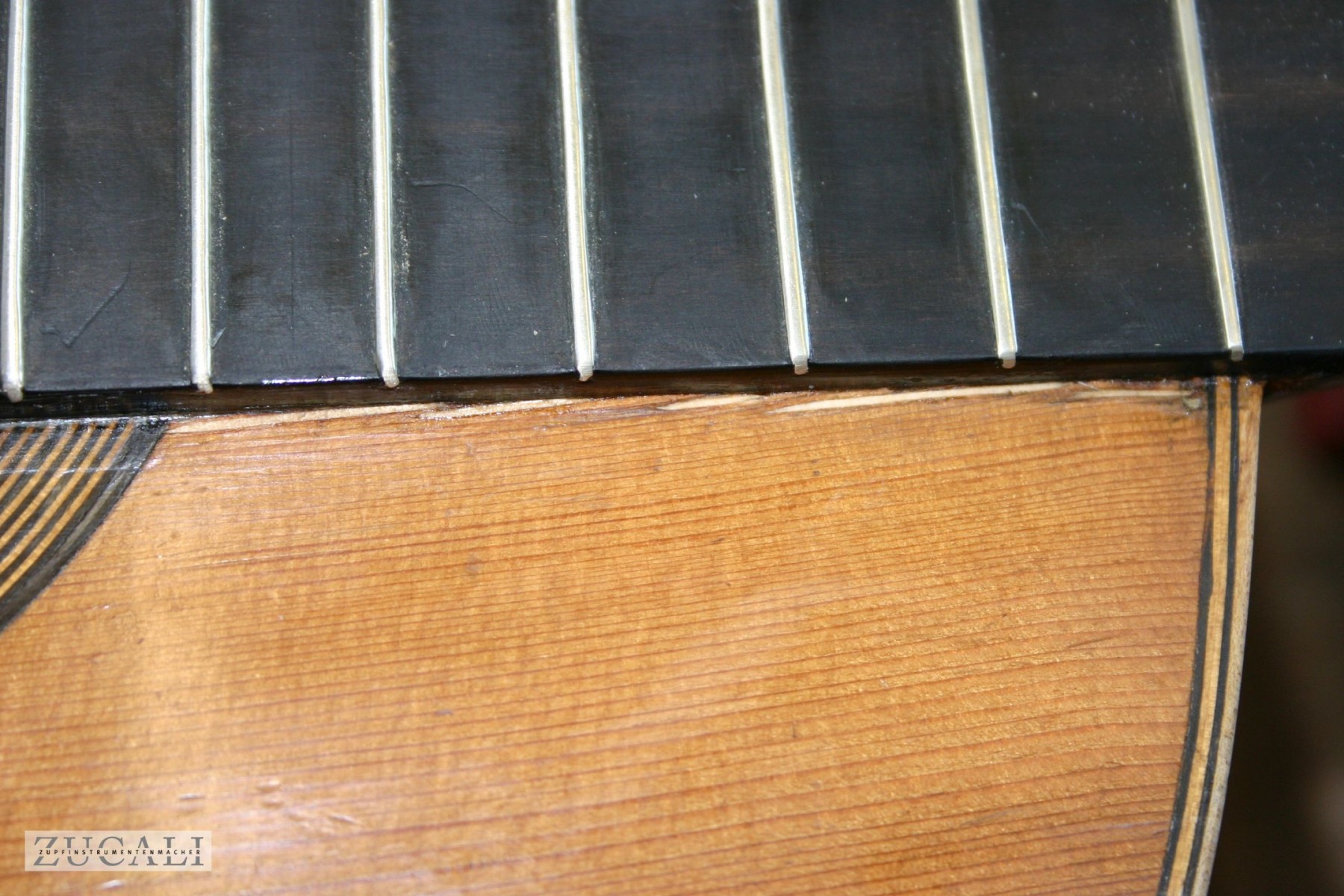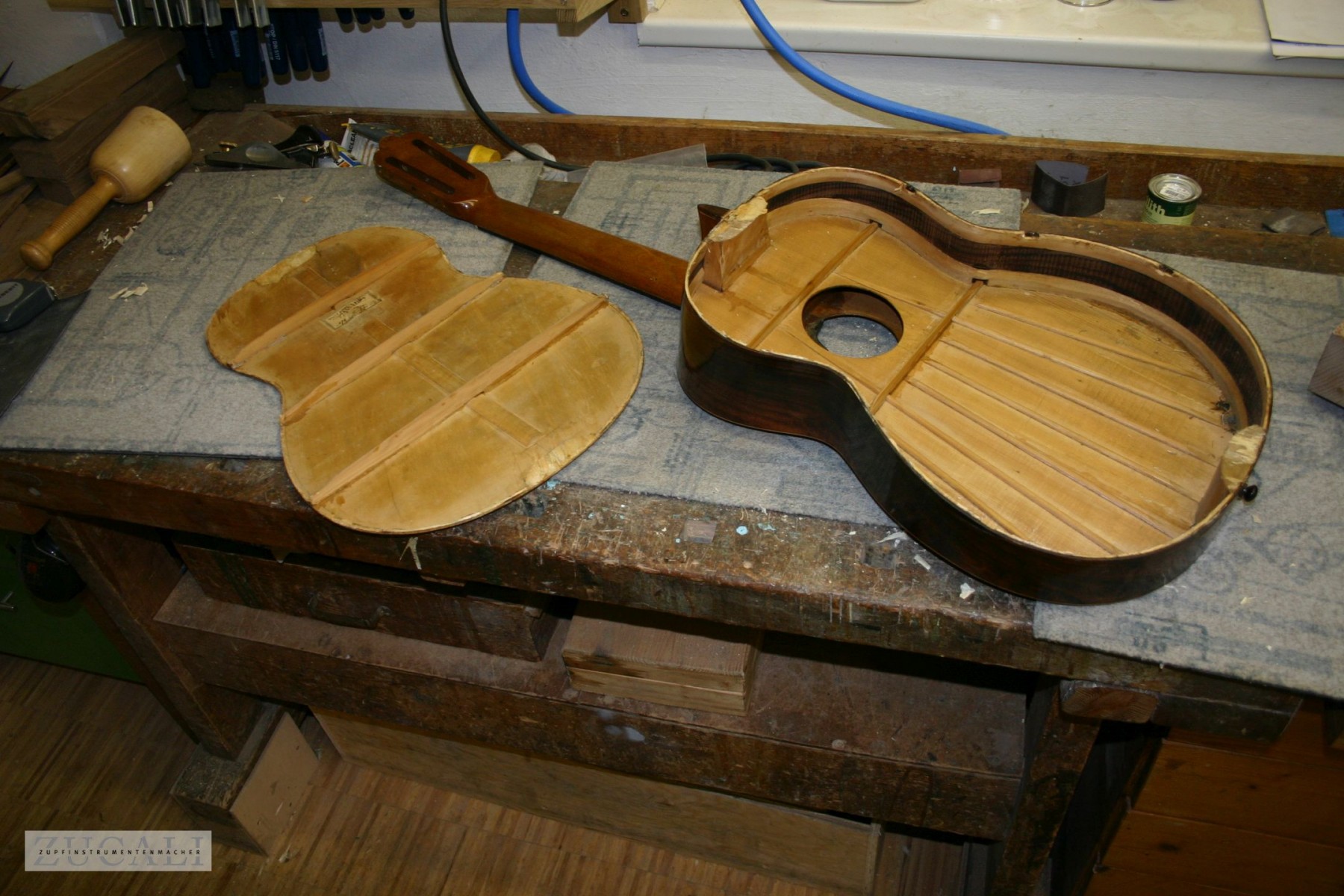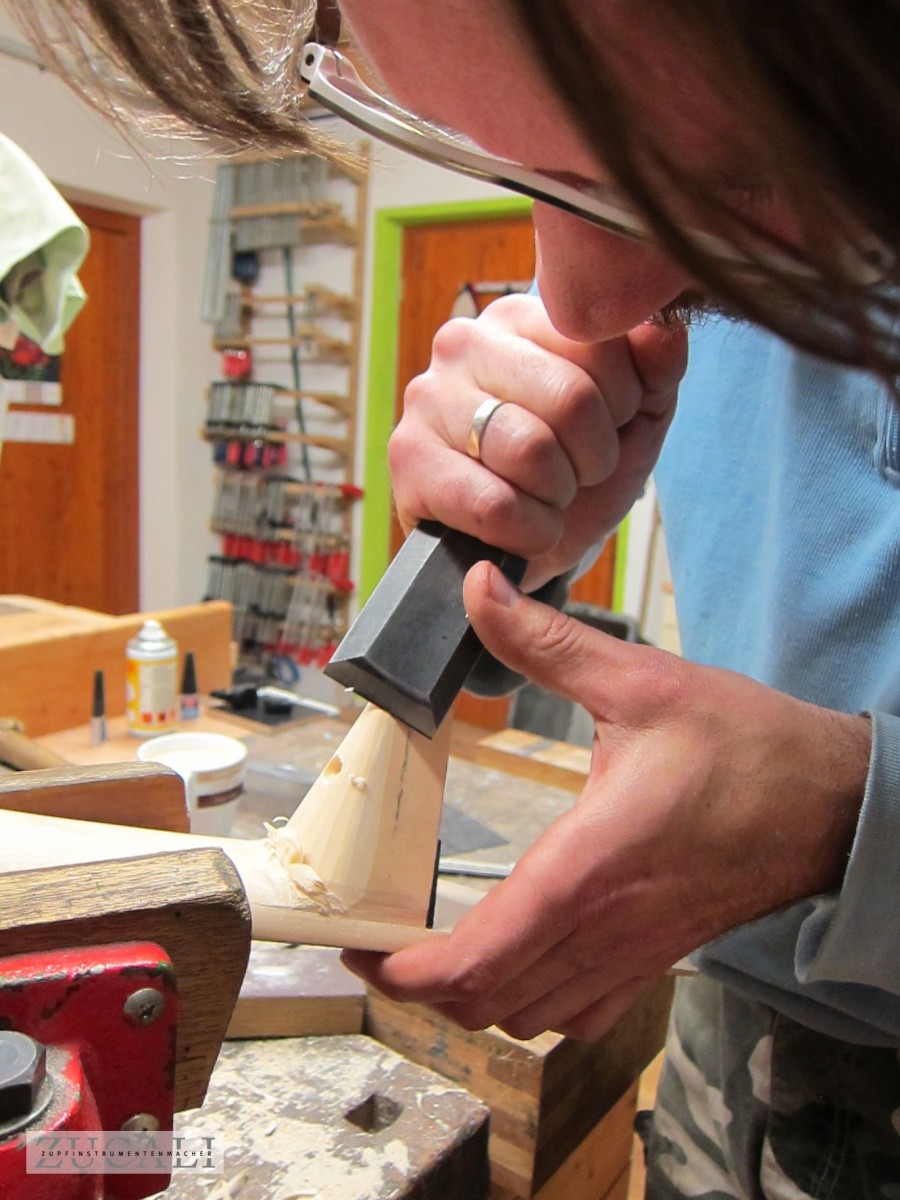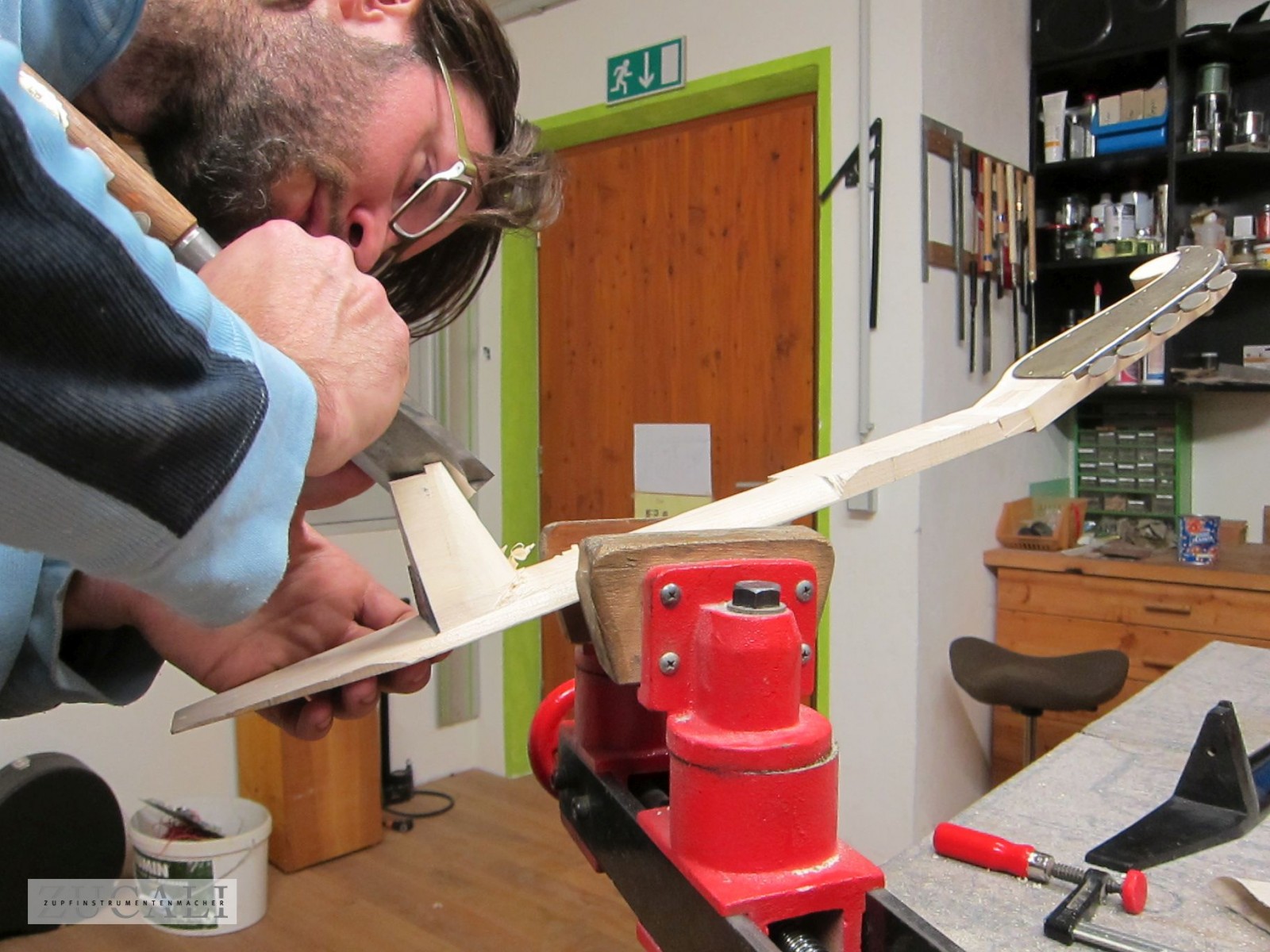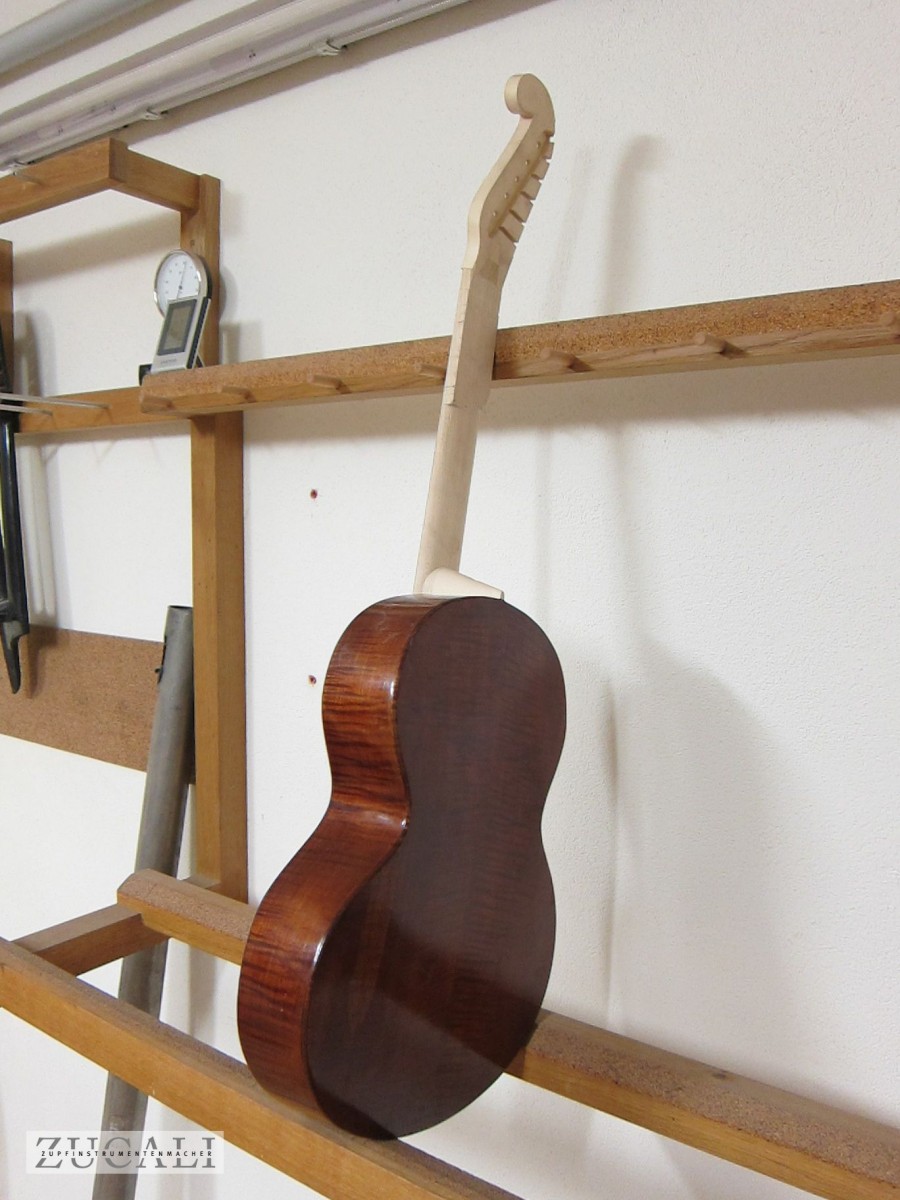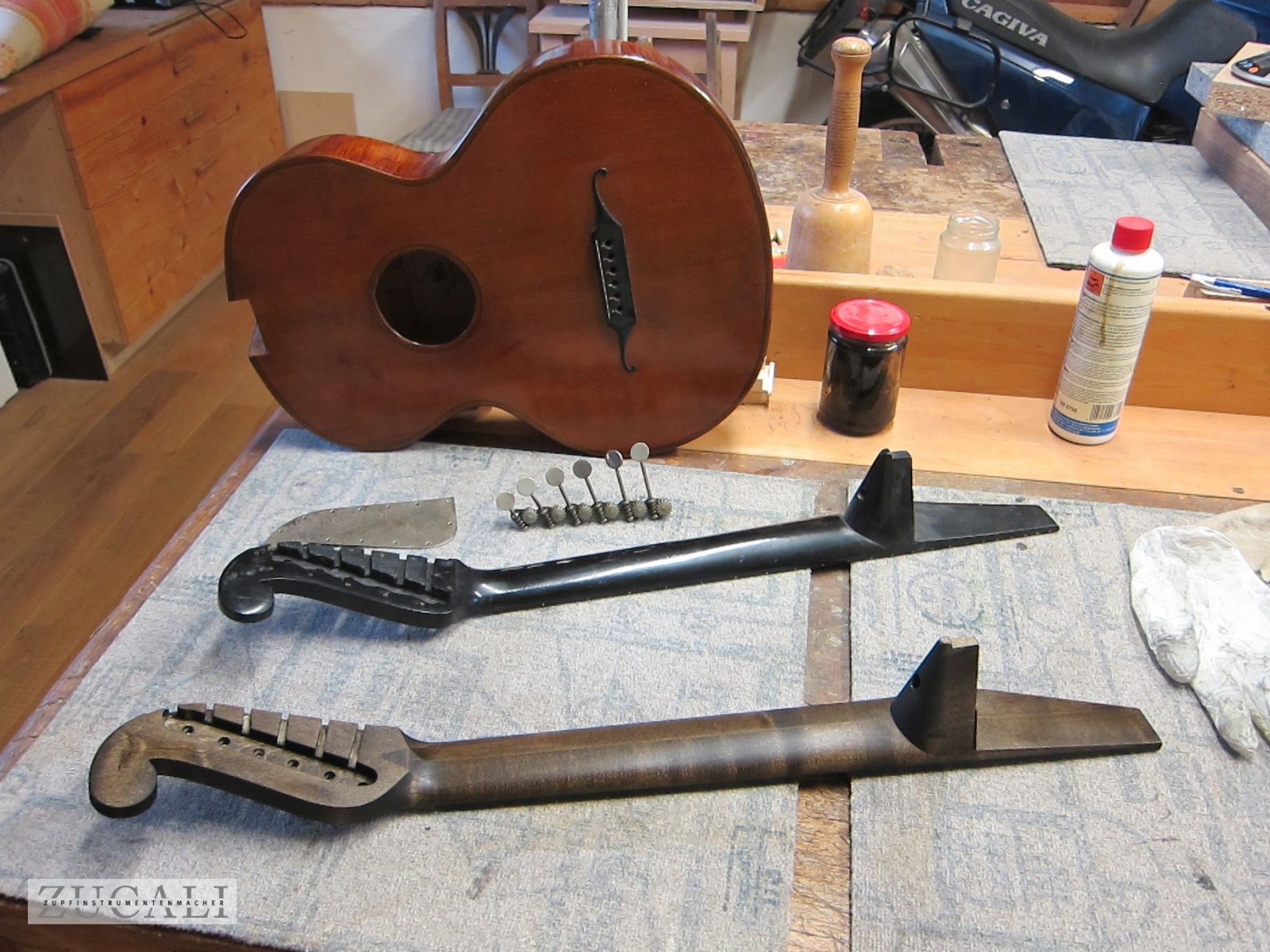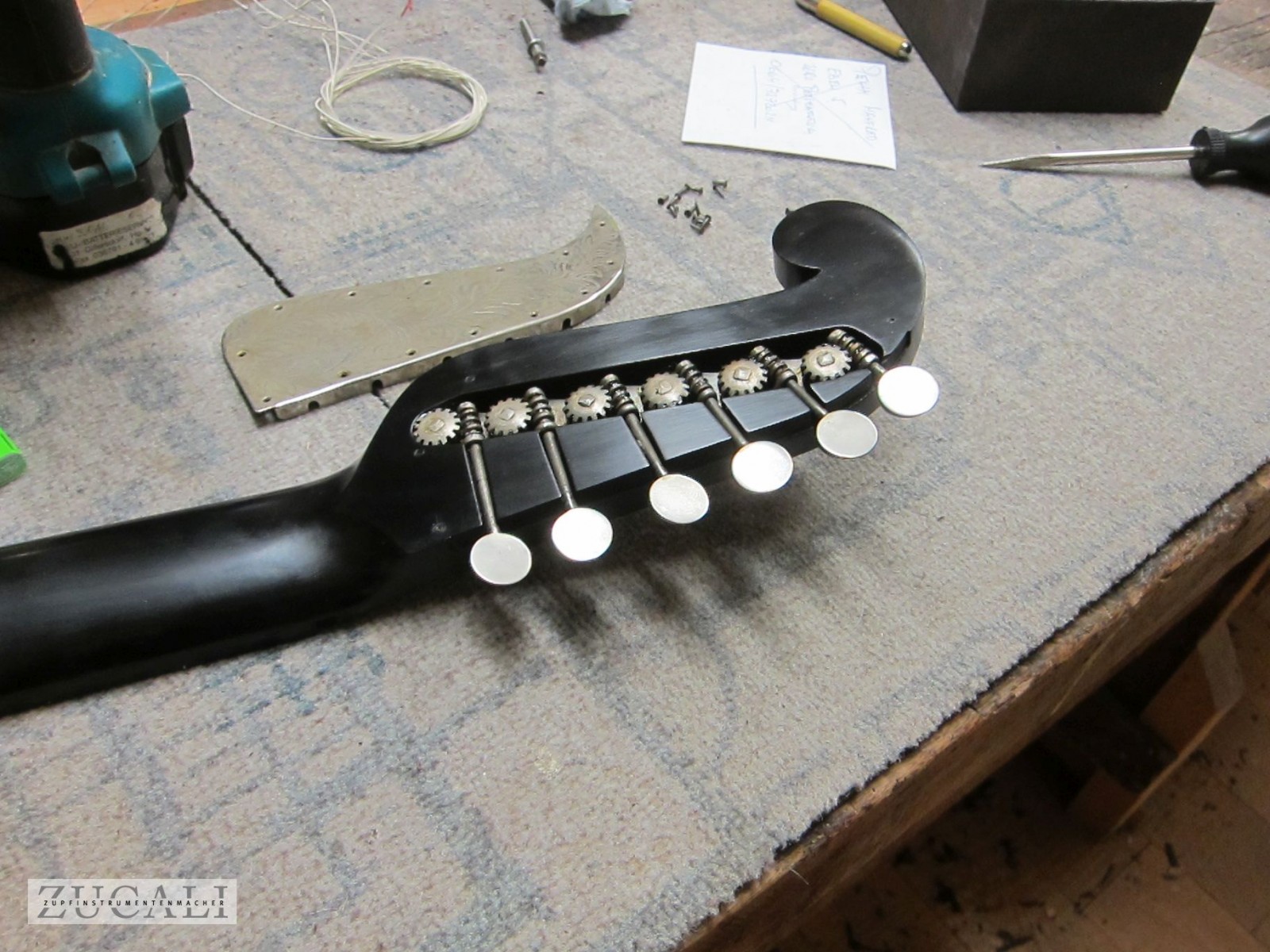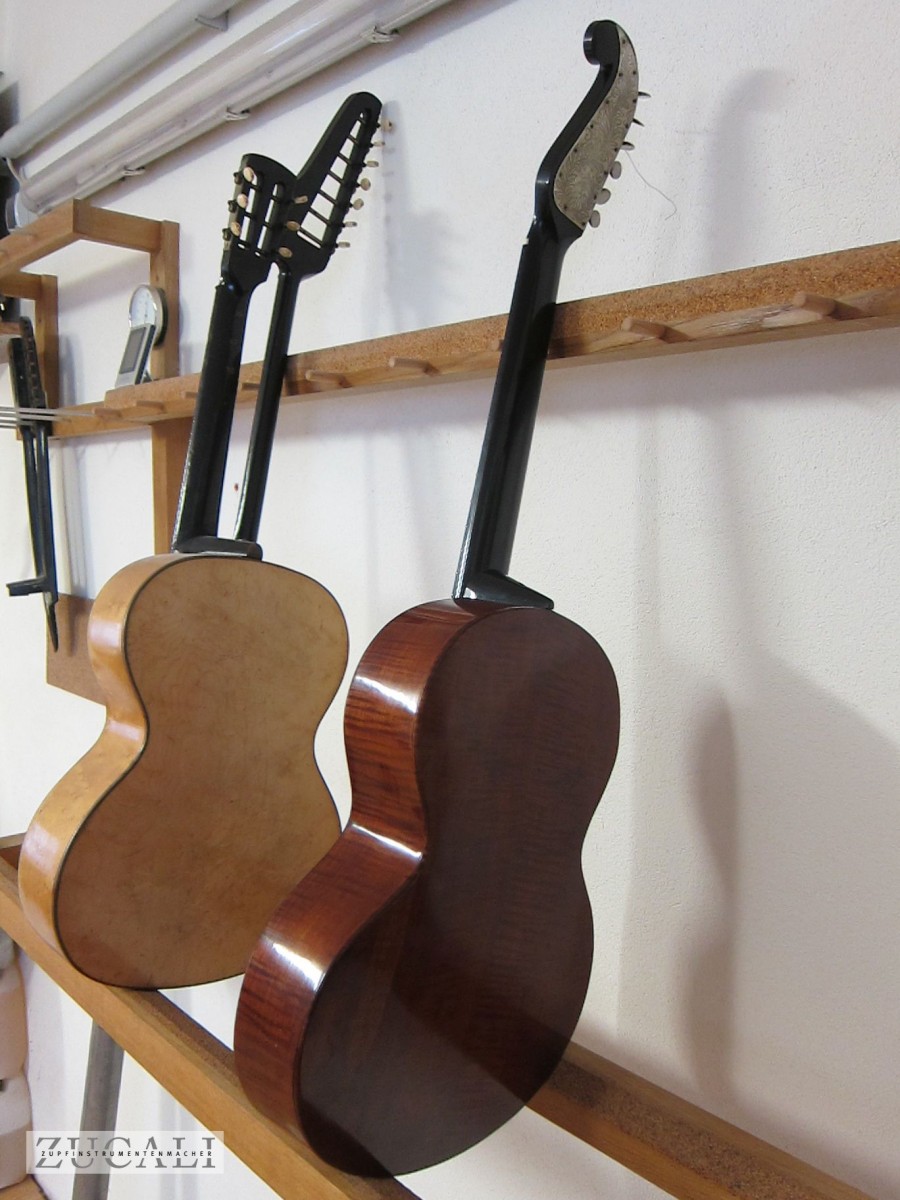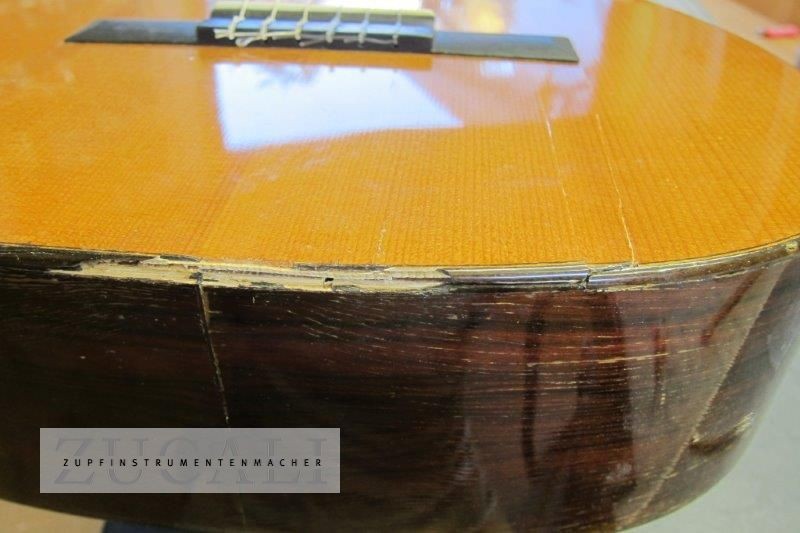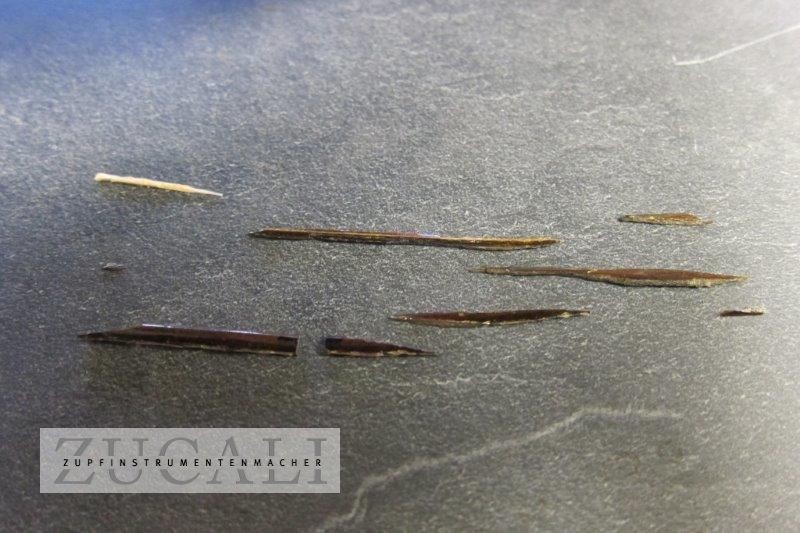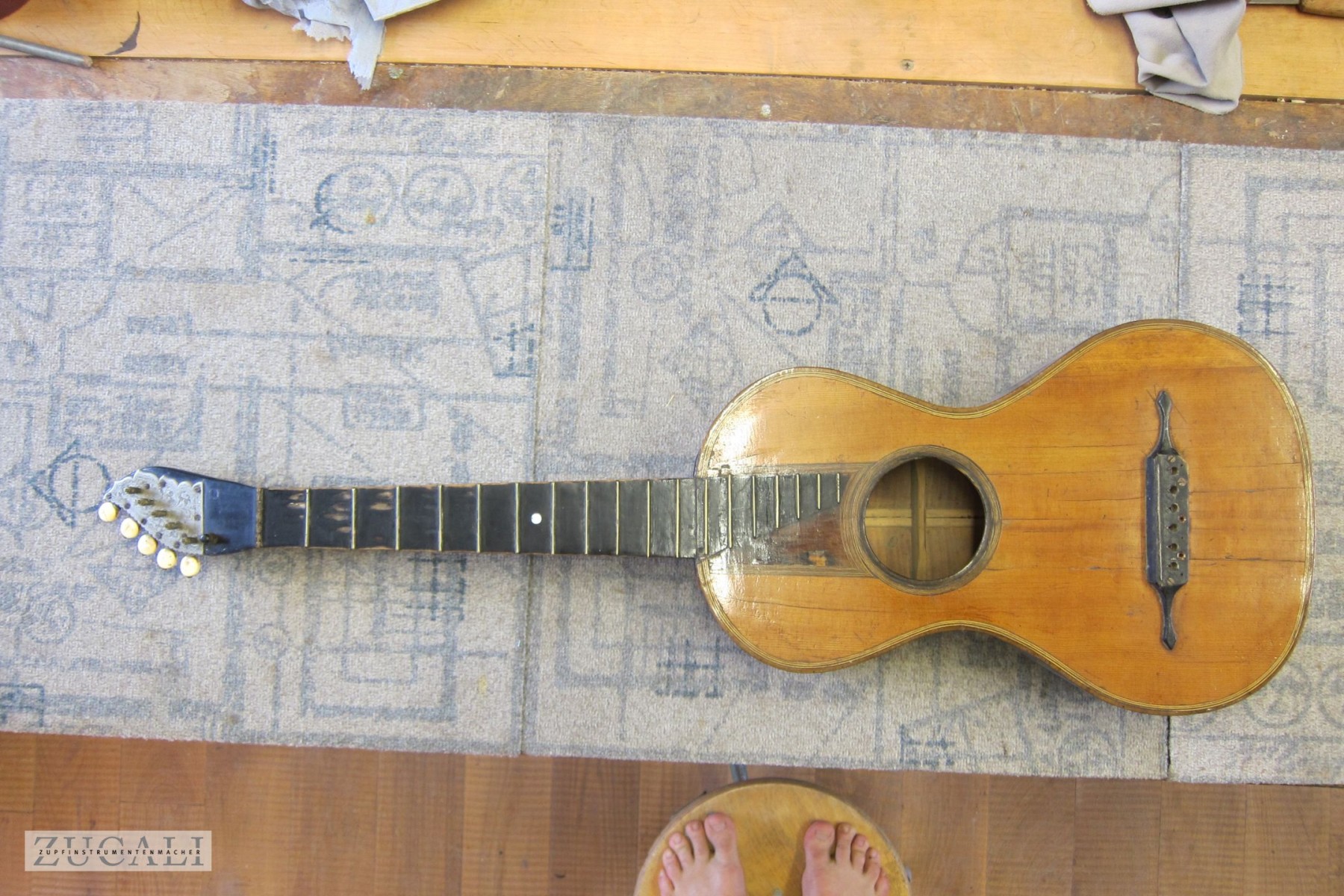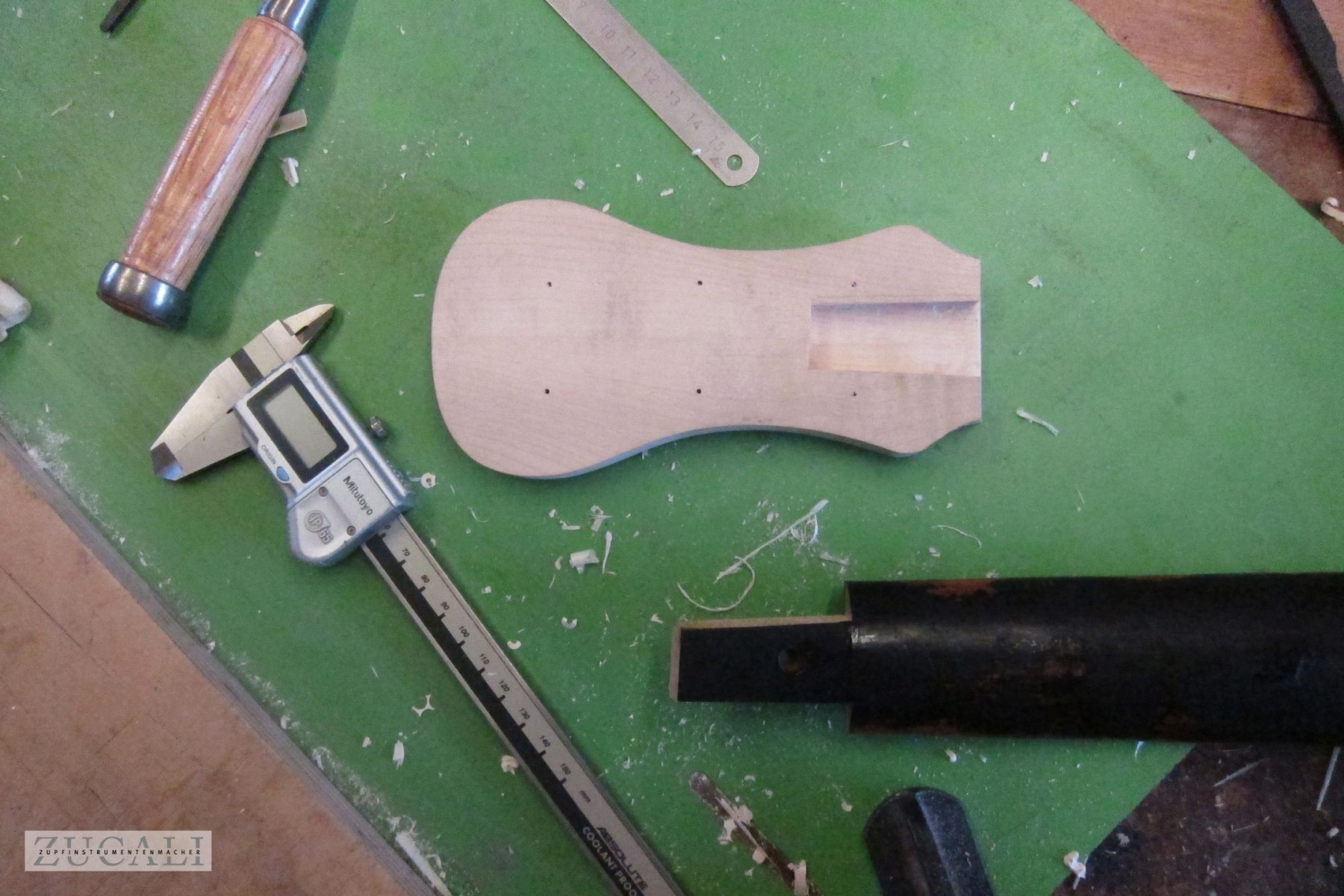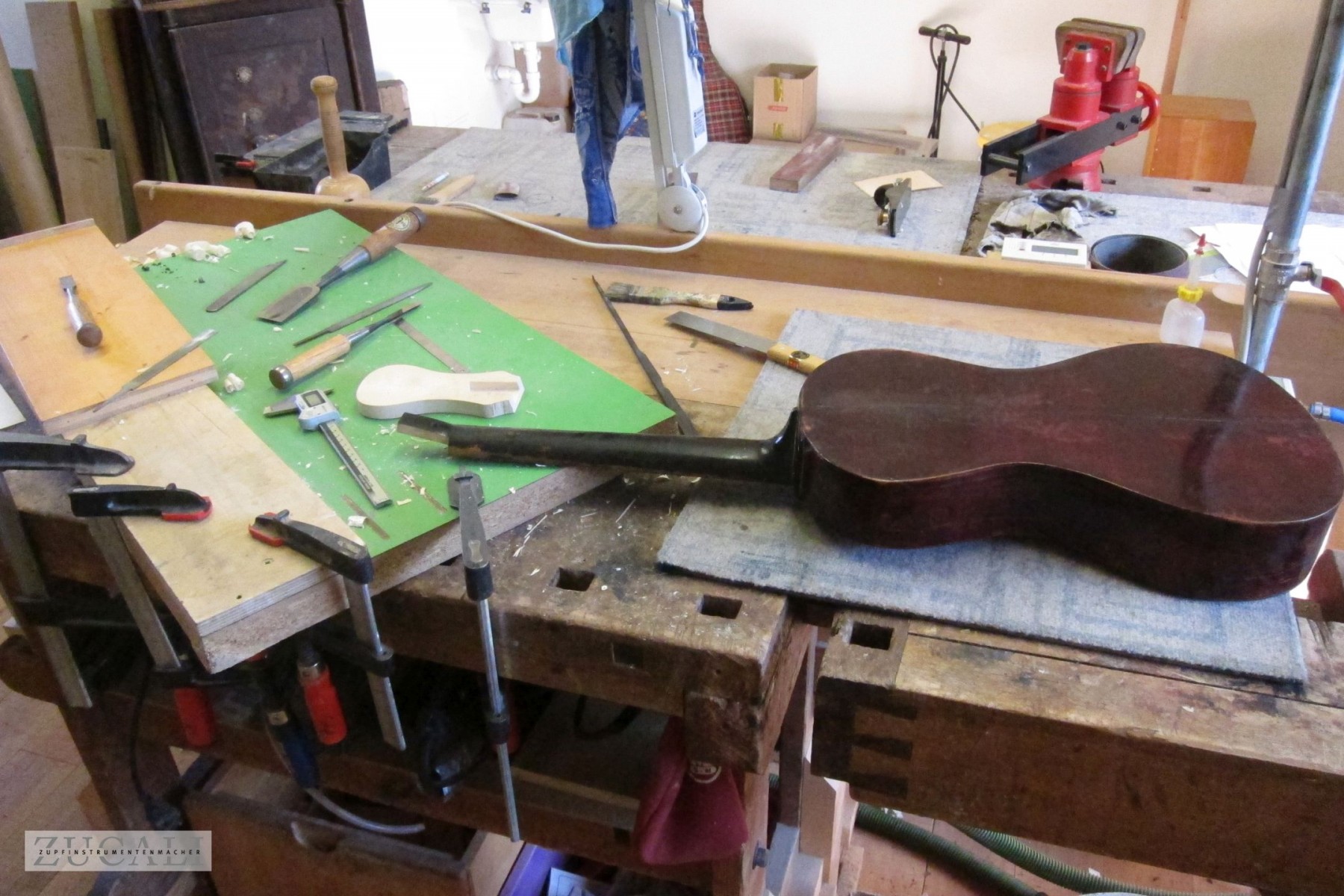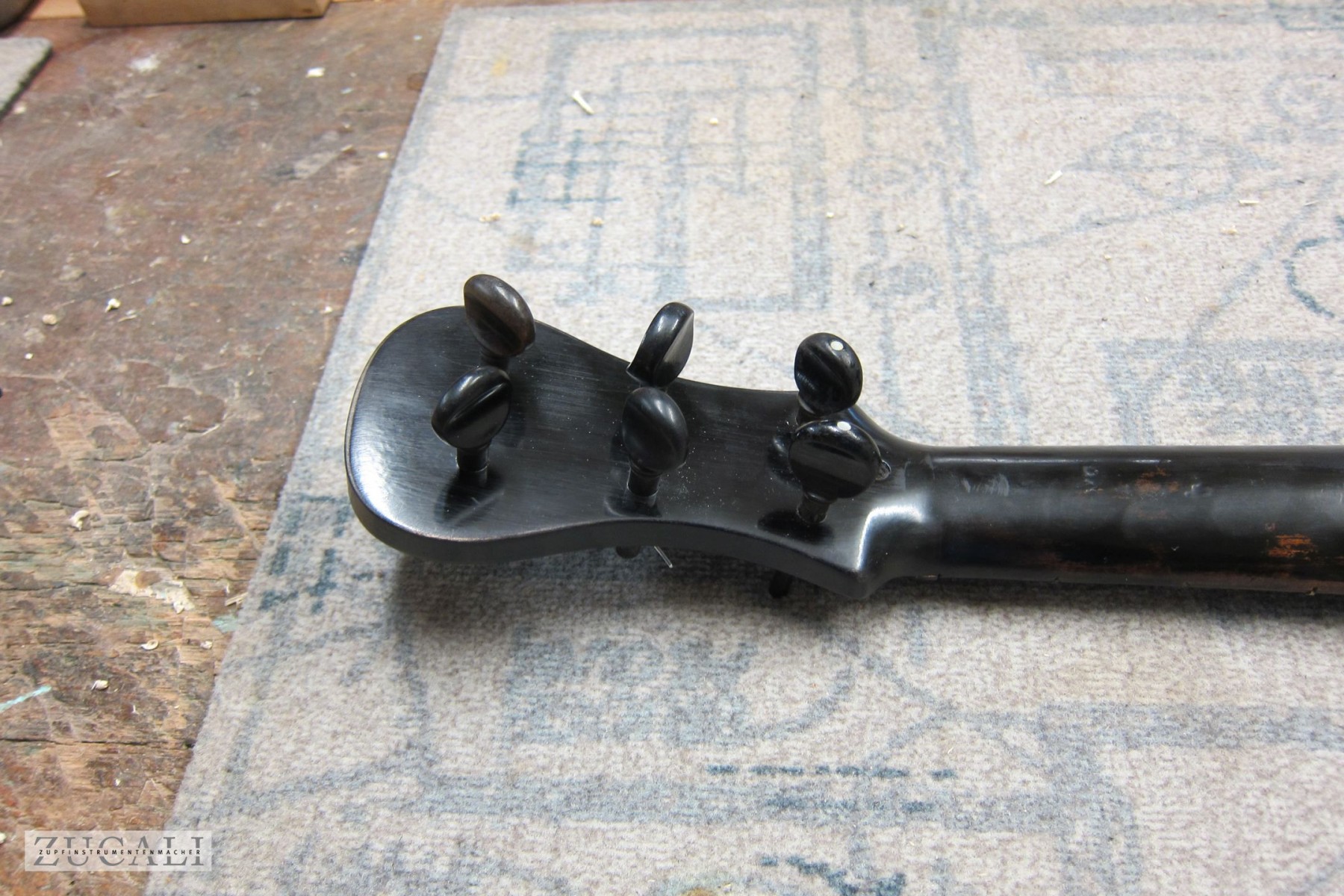Repairs / Restoration
One important component of my work is repairs and servicing. Many musicians underestimate the value of a professionally serviced guitar. A lot of “played to death” instruments come back to life after a few hours of work.
It is quite rare that I get to undertake restorations of old guitars, yet it is therefore all the more exciting. The main aim of any restoration is keeping the original instrument alive.
It is quite rare that I get to undertake restorations of old guitars, yet it is therefore all the more exciting. The main aim of any restoration is keeping the original instrument alive.
